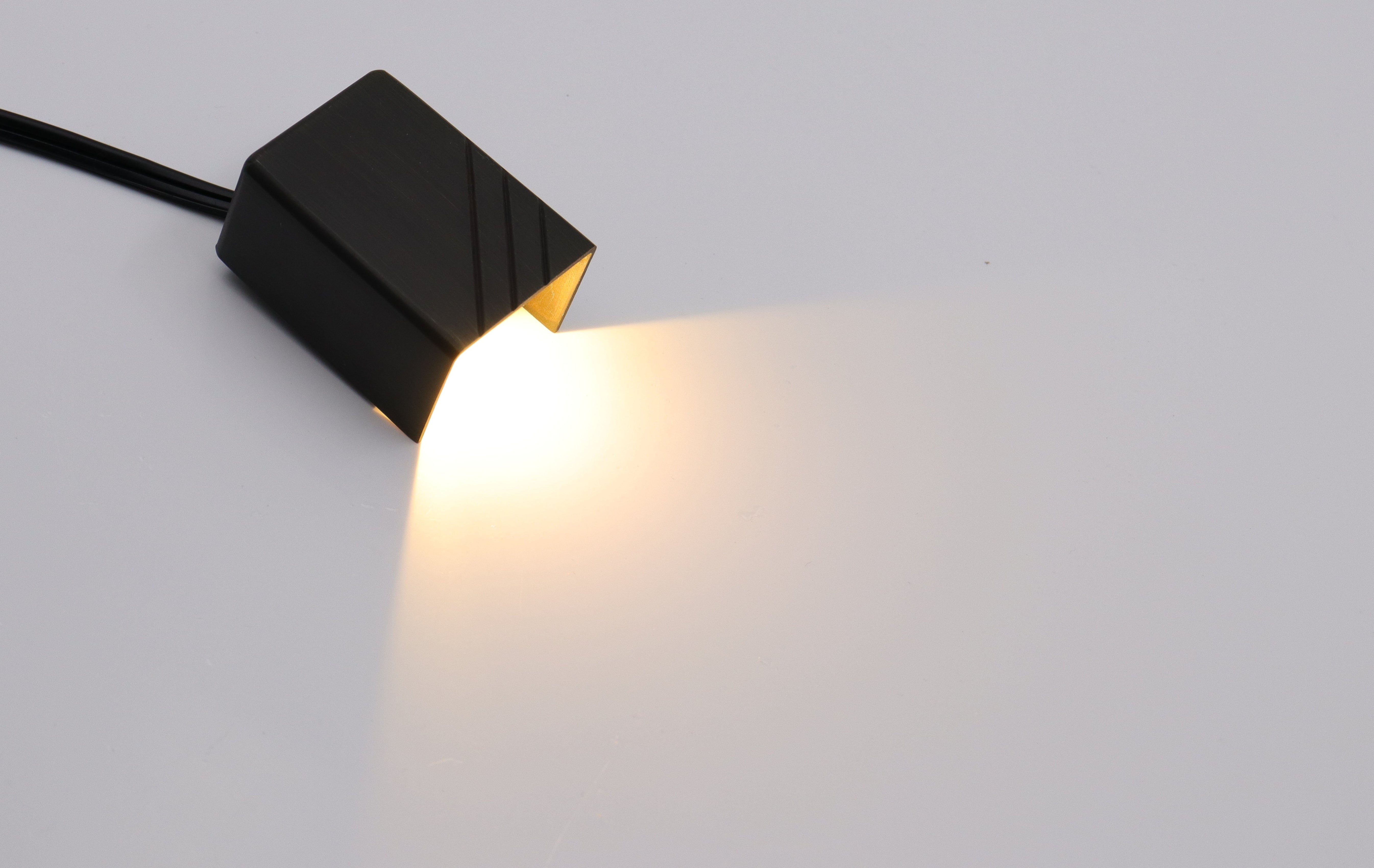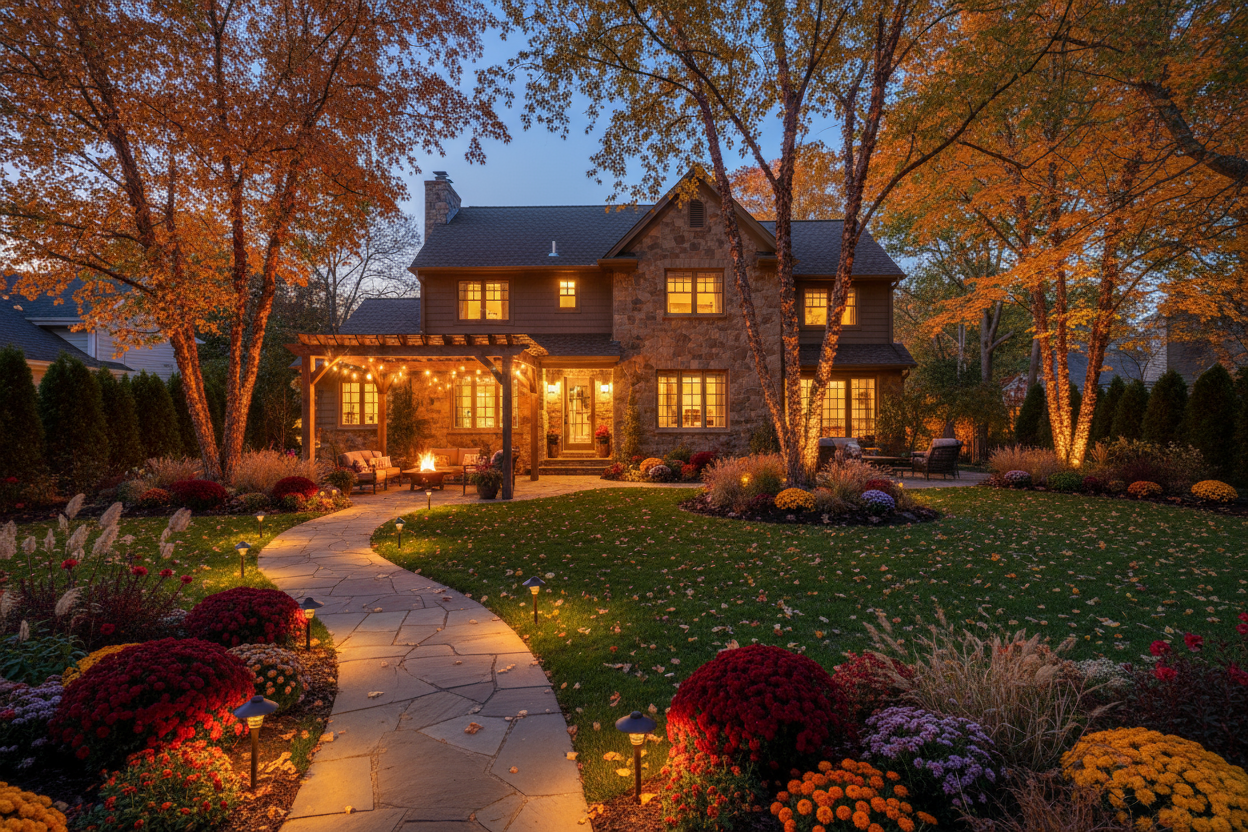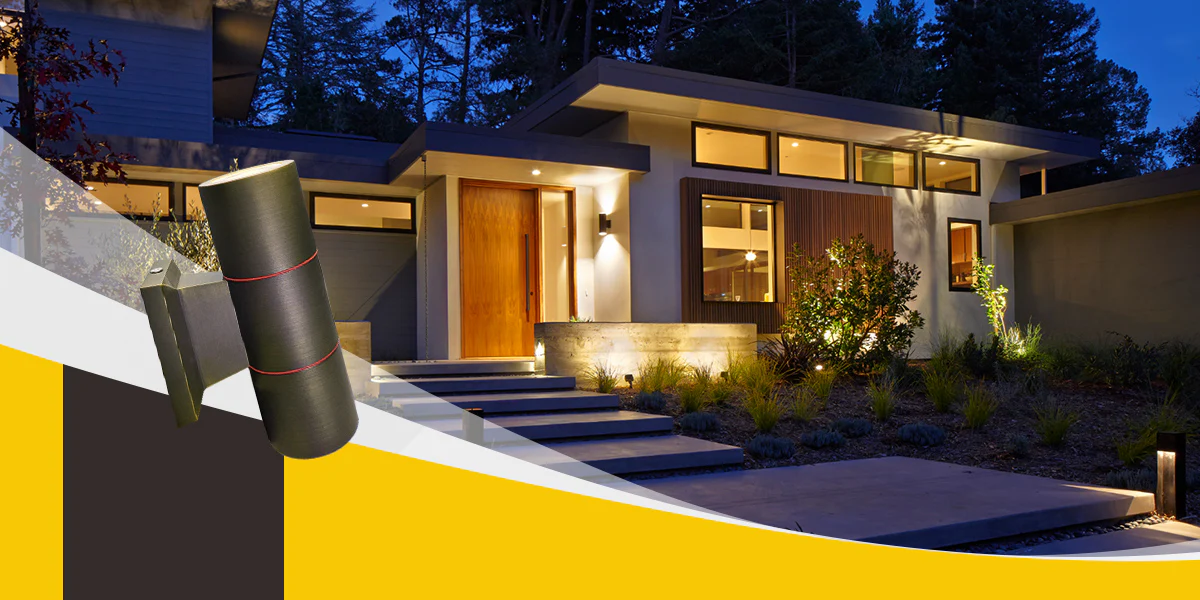In 2025, outdoor lighting has evolved far beyond functional illumination—it is now a design-driven discipline that defines how people experience their outdoor spaces. Homeowners, designers, and contractors are prioritizing landscape lighting not only for safety and visibility but also for ambiance, aesthetics, and energy efficiency.
If you’re planning to upgrade your yard or guide clients in modern landscape design, understanding the key lighting trends for 2025 will help you achieve a timeless and high-impact result.
Below are the six leading trends shaping outdoor lighting this year, backed by industry data, professional insights, and real-world design practices.
1. Warm Layered Lighting: Bringing Natural Balance to Outdoor Spaces
One of the strongest movements in 2025 is the return to warmth and layering. Instead of relying on harsh, single-source lighting, professionals now use a mix of ambient, accent, and functional light layers to replicate the softness of natural daylight.
- Ambient Lighting: Sets the overall mood and ensures nighttime safety, often achieved with subtle downlighting from trees or eaves.
- Accent Lighting: Adds drama and focus to architectural elements, textures, or plant forms.
- Functional Lighting: Delivers targeted illumination for pathways, steps, or seating zones without glare.
Design research shows that using 2700K–3000K warm white light increases the perceived comfort of outdoor areas by up to 20% compared with cooler tones. Warm tones enhance materials like stone and wood, creating a welcoming and cohesive visual experience.
Pain Point Solved: Many yards feel flat, cold, or overly bright at night. Layered lighting restores balance—creating spaces that are both safe and emotionally inviting.
2. Architectural Integration: Lighting That Blends Seamlessly with Design
In modern landscape design, lighting should appear as if it was built into the architecture, not added afterward. The trend for 2025 emphasizes integration over installation—fixtures that blend invisibly with structures, walls, and natural features.
Designers achieve this by:
- Using low-profile fixtures that align with the home’s architectural geometry.
- Employing wall grazing and uplighting to highlight textures instead of flat illumination.
- Concealing wiring and housings within masonry, decking, or planting beds.
This approach creates visual harmony, guiding the eye naturally through the space. When lighting complements architectural lines, it elevates the entire property rather than merely lighting it.
Pain Point Solved: Traditional outdoor lighting often feels “stuck on” or overly technical. Integrated lighting merges form and function for a more refined design outcome.
3. Low Voltage and Energy Efficiency: Smarter, Safer, Sustainable
The shift toward low voltage landscape lighting continues to dominate 2025 trends. Homeowners and professionals alike are recognizing its advantages in safety, efficiency, and cost control.
According to industry data, LED-based low voltage systems consume up to 80% less energy than older halogen or incandescent options. This translates into lower utility bills and fewer maintenance cycles.
Additionally, low voltage lighting systems:
- Offer safer operation for residential yards.
- Support flexible installation and zone control.
- Reduce heat emission and fixture degradation.
Paired with durable materials like solid brass housings and corrosion-resistant wiring, these systems are designed for longevity in all climates.
Pain Point Solved: High power consumption, short lamp life, and outdoor corrosion. Low voltage LED lighting eliminates these challenges while maintaining powerful performance.
4. Sustainability and Dark-Sky Awareness
As global awareness of light pollution and environmental responsibility increases, sustainable lighting design is now a mainstream expectation rather than an optional upgrade.
Designers are prioritizing:
- Downward light distribution to minimize glare and protect night skies.
- Shielded optics to reduce light trespass into neighboring properties.
- Eco-friendly materials like brass or copper that last decades instead of years.
The International Dark-Sky Association reports that nearly 30% of outdoor lighting is wasted through inefficient design. Modern systems correct this by focusing light only where it’s needed—enhancing beauty while respecting ecology.
Pain Point Solved: Excessive light spill, neighborhood glare, and premature fixture replacement. Sustainable lighting preserves both energy and the nighttime environment.
5. Minimalist Fixtures, Maximum Impact
The aesthetic trend for 2025 is clear: less fixture, more light effect.
Today’s homeowners want the glow, not the gadget. Designers are turning to concealed, minimalist fixtures that disappear into the landscape while producing elegant, controlled illumination.
Key characteristics include:
- Slim profiles and matte finishes that blend into surroundings.
- Hidden light sources that reveal form through contrast.
- Narrow beam angles for precision highlighting.
The result is sophisticated simplicity—outdoor lighting that enhances without dominating.
Pain Point Solved: Bulky, overexposed fixtures that clutter the yard. Minimalist lighting focuses on artistry, not hardware.

6. Lighting for Outdoor Living Zones
Outdoor spaces have become extensions of indoor living, supporting dining, entertainment, and relaxation. In 2025, lighting design is becoming more zone-specific—tailored to how each area is actually used.
For example:
- Dining zones benefit from soft overhead or indirect lighting that flatters skin tones and table settings.
- Pathways and steps require consistent low-level illumination for safety and guidance.
- Lounge and garden zones call for subtle accent lighting to preserve tranquility.
Lighting experts recommend variable brightness levels (dimming or zoning) to match the time of day or activity, ensuring versatility without wasting energy.
Pain Point Solved: Many outdoor areas are either too bright for comfort or too dim for function. A zoned lighting approach ensures each area performs exactly as intended.
Design and Installation Best Practices
To fully leverage these trends, both homeowners and professionals should adopt a structured design process:
- Start with a plan: Identify focal points, activity zones, and circulation paths.
- Choose quality materials: Opt for solid brass or marine-grade metal fixtures for long-term corrosion resistance.
- Layer intentionally: Combine ambient, accent, and functional light to achieve balance and depth.
- Maintain consistency: Use uniform color temperatures across fixtures for cohesive results.
- Test before finalizing: Always check beam angles and glare in real nighttime conditions.
- Ensure proper sealing: Outdoor environments demand watertight, well-insulated connections to maintain performance year-round.
A thoughtful installation doesn’t just illuminate—it defines mood, safety, and design longevity.
Final Thoughts
Outdoor lighting is no longer about brightness—it’s about balance, beauty, and longevity.
Whether you’re a homeowner transforming your yard or a landscape designer specifying fixtures, applying these principles ensures your lighting design stands the test of time, both visually and functionally.
Modern landscape lighting transforms your yard into an inviting, elegant, and sustainable extension of your home—where every beam of light has meaning.







Leave a comment
All comments are moderated before being published.
This site is protected by hCaptcha and the hCaptcha Privacy Policy and Terms of Service apply.